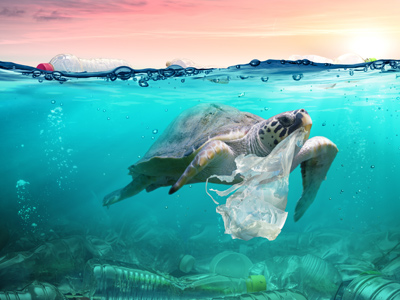

Plastic Pollution
Our environment is facing many dangers. Climate change may be the biggest threat, but plastic pollution is not far behind. We dump millions of tonnes of plastic into our rivers and seas. So much so that it is killing ocean life and even getting into our own water supply!
You'd think that recycling plastics is the answer. That certainly would help, but many of the plastics finding their way into our waters were never intended to be recycled. Tiny balls of plastic known as microbeads are put into cosmetics and toothpastes to make them better at cleaning. That's all very well, but when you use them, these microbeads are flushed down the drain into our sewers and, eventually, our oceans. The only way to tackle this menace is to ban it - as some countries have but, sadly, too few.
In this quiz we look at the effects and the causes of plastic pollution, and we'll also learn what we can do to put a stop to it.
Test yourself on the huge subject of science in our KS3 Science section. Covering a variety of topics over 500 questions – see if you can get them all correct.
Ready for more?
not all...
quizzers. Try to win a coveted spot on our Hall of Fame Page.






